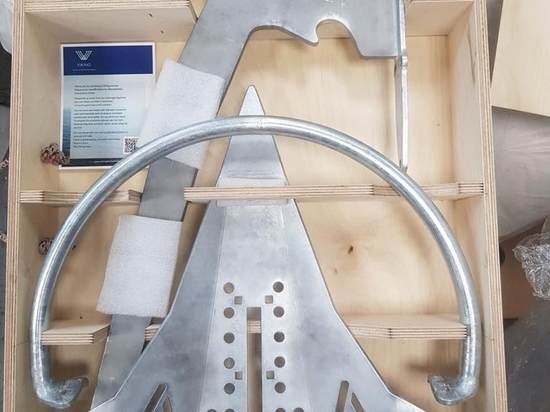
#Industry News
Viking anchors lifting the benchmark for boat anchor design
A new generation boat anchors made of HT steel is changing the boat anchor market
Lifting the benchmark for an anchor design
Viking Anchors have lifted the benchmark for anchor design by being at the forefront of the use of high tensile (HT) carbon steel throughout the anchor.
There is no escaping the fact all anchors are a compromise, some perfectly good anchors don’t fit on all bow rollers, some work better in sloppy mud but not in weed, some need to have ballast in the toe, some have shanks of questionable strength. If there was a perfect anchor….
We would all be using one!
At Viking Anchors, we looked at this conundrum and decided to design and make the best anchor possible taking advantage of the best materials available. Our focus was on design and engineering excellence married together to offer the best performance.
So where does a lightweight anchor fit in the hierarchy of cruising anchors? Current aluminum alloy anchors that have dominated the lightweight anchor market have some severe disadvantages. The shanks of aluminum anchors are more vulnerable in side-load situations. In weedy or pebbly seabeds the flukes of any Danforth aluminum type anchor are prone to catching debris and the anchor can drag - or not set, or reset. Some aluminum anchors need ballast in the toe to perform and that ballast does not contribute to holding - but offers a location for galvanic corrosion. We looked at these negatives (and more) and designed out a lightweight anchor from the drawing board up.
Theoretical studies from Universities as far apart as Perth, Australia, and Houston, USA, all show that the hold of an anchor is contingent on surface area, not weight. If you had a paper-thin but strong fluke it would have a higher hold than the same area of fluke made from 10cm thick steel - because the thin fluke can penetrate more deeply - it is the design, not weight, that provides excellence in performance.
The team at Viking Anchors unashamedly looked at University research papers, corresponded with titans in the field of anchor design from Western navies, and leaned heavily on developments in the oil industry. We distilled these decades of research and applied the results intending to move the performance of the leisure anchor forward by a quantum leap.
When Viking Anchors introduced their first version of a lightweight anchor made from HT steel in 2018 it changed the market forever.
There was an anchor of lighter weight that competed head-on with the recent batches of ‘new generation’ anchors. If you believe weight is important you can simply buy a Viking of great physical size - it will have a higher potential hold - but you do not need that higher hold. You will find vessel size vs anchor weight spreadsheets from Viking Anchors are more than adequate. The old fashioned idea that ‘Bigger is Better’ simply lines the pockets of anchor makers!
What made our design possible was the ability to source and use high-grade steel for the whole anchor structure and not just for the shank, The use of materials that can be found mostly in military applications, from armored vehicles to submarines combined with futuristic advanced designing methods supported the evolution of our first design. From the design, we embarked on a series of exhaustive tests of products available and learning of the existing anchors' weaknesses, and eliminating each of them - one by one.
We don’t yet have the perfect anchor. We have an anchor that is better than anything else in the market place. We know it will not fit on every bow roller - but now that we have a product of which we, and you, can be proud and rely on - we can fund our future development work.
A Viking anchor is easily moved around the vessel, they don’t need to be stowed on a dedicated bow roller unless you choose to do so. The anchor sets quickly and reliably. It has a high hold to weight ratio. Each of our anchor's sizes apart from the 30 and the 35 models which are impossible to test (simply because you need a very large towing vessel and very high capacity load cell) has been tested for hold and strength. Our anchors have been tested independently and some of the results are already available online.





